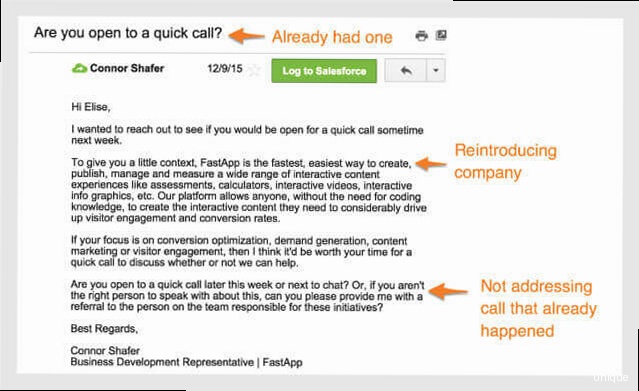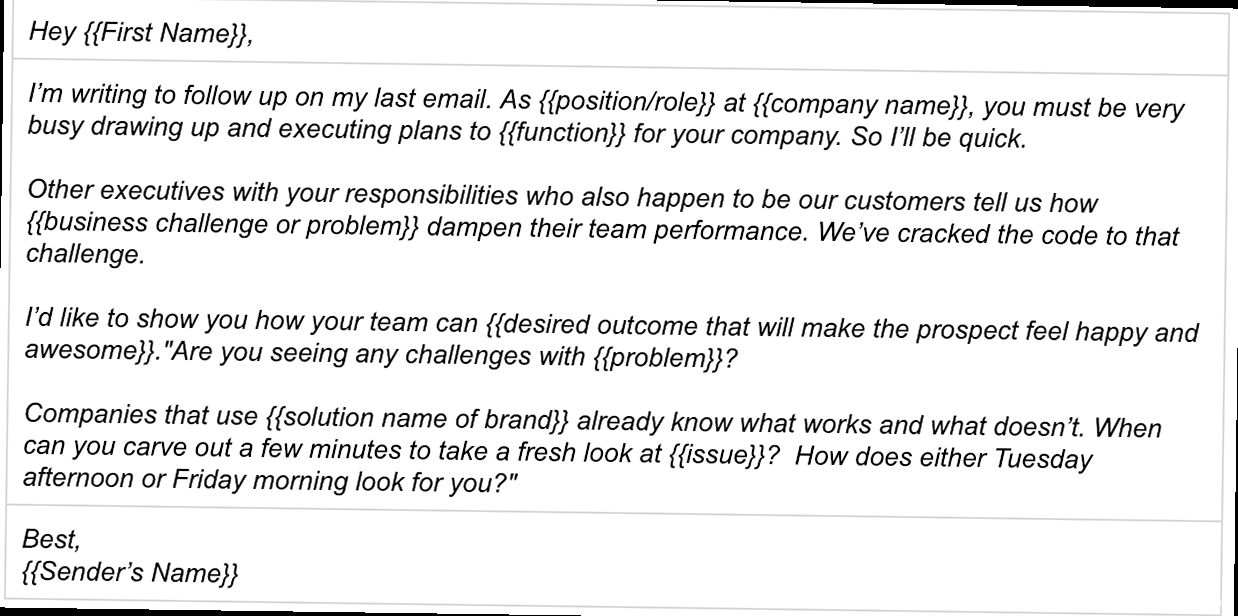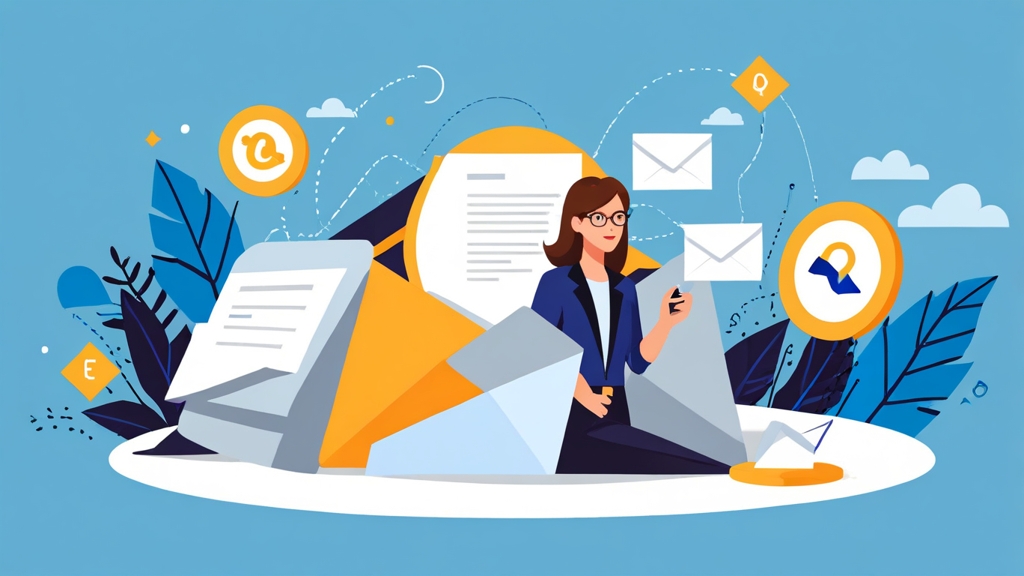How to Follow Up on Cold Emails: Maximizing Response Rates
Sending cold emails can feel like shouting into the void. You craft the perfect message, hit send, and… crickets. But the initial email is only half the battle. Effective follow-up is crucial to turning those cold prospects into warm leads. This article will provide a strategic guide to crafting and scheduling follow-up emails that boost engagement and improve your overall cold emailing success.
Optimizing Your Initial Email for Follow-Up Success

Before even thinking about follow-up emails, it’s essential to ensure your initial email is optimized for engagement. A poorly crafted initial email makes follow-up difficult and less effective. Think of your first email as setting the stage for a conversation. A clear, concise, and personalized initial email significantly increases the likelihood of receiving a response, making the follow-up process smoother and more productive.
Clarity and Conciseness
Your initial email should be easy to understand and quickly convey your value proposition. Avoid jargon and industry-specific terms that your recipient may not be familiar with. Get straight to the point and highlight the key benefits you can offer. A busy executive likely only spends a few seconds scanning your email, so make every word count.
- Clearly state the purpose of your email in the first paragraph.
- Highlight 1-2 key benefits for the recipient.
- Use bullet points or short paragraphs for readability.
Subject: [Recipient's Company] - Boosting [Specific Metric]
Hi [Recipient Name],
I noticed [Recipient's Company] is focusing on [Specific Area]. We've helped companies like [Competitor] increase their [Specific Metric] by X% using [Your Solution].
Would you be open to a quick 15-minute call to discuss how we can help you achieve similar results?
Best,
[Your Name]
Personalization and Relevance
Generic emails are easily ignored. Personalization demonstrates that you’ve done your research and understand the recipient’s needs. Reference specific projects, articles, or company initiatives that align with your offering. This shows you’re not just sending a mass email but genuinely interested in helping them.
- Mention a recent blog post or article they published.
- Reference a specific project or initiative their company is working on.
- Acknowledge their role and responsibilities within the company.
Subject: Content Marketing Strategies at [Recipient's Company]
Hi [Recipient Name],
I enjoyed your recent article on [Article Title] and the importance of [Specific Point from the Article]. At [Your Company], we've developed solutions that can help [Recipient's Company] further leverage [Specific Point] to drive [Desired Outcome].
Would you be open to a quick chat to explore how we can help?
Best,
[Your Name]
Clear Call to Action
Tell the recipient exactly what you want them to do. A vague call to action (CTA) leads to inaction. Make it easy for them to respond by providing a specific and simple request. Instead of asking if they’re “interested in learning more,” suggest a specific time for a call or ask a direct question.
- Schedule a short call: “Are you available for a 15-minute call next week?”
- Ask a specific question: “What are your biggest challenges with [Specific Area]?”
- Provide a valuable resource: “Here’s a link to a case study that might be relevant to your needs.”
Subject: [Previous Subject] - Following Up
Hi [Recipient Name],
Just wanted to follow up on my previous email. Are you available for a brief 15-minute call on Tuesday or Wednesday next week to discuss how we can help you improve [Specific Metric]?
Best,
[Your Name]
A/B Testing for Improved Performance
To maximize the effectiveness of your initial and follow-up emails, continuous A/B testing is crucial. Experiment with different subject lines, email body copy, and calls to action to determine what resonates best with your target audience. Track key metrics such as open rates, click-through rates, and response rates to identify winning strategies. Tools like Mailchimp, HubSpot, and Lemlist offer A/B testing features that allow you to easily compare different versions of your emails and optimize your campaigns for better results. Example: To A/B test your subject lines, you can create two variations of the same email with different subject lines and send them to a subset of your target audience. For instance, you might test “Increase Your Sales by 20%” against “[Recipient’s Company] – Sales Optimization Strategy.” Monitor the open rates for each subject line to determine which one performs better. Once you’ve identified a winning subject line, you can use it for the rest of your campaign. By focusing on clarity, personalization, and a clear call to action in your initial email, you significantly increase your chances of receiving a response and setting the stage for a productive conversation during the follow-up process. Remember to continuously test and refine your approach based on the feedback you receive and the data you collect.Crafting Effective Follow-Up Email Content

Varying Subject Lines
Repetitive subject lines like “Following Up” quickly lose their effectiveness. Use different subject lines for each follow-up email to pique the recipient’s interest and avoid being filtered as spam. Consider using question-based subject lines, highlighting specific benefits, or referencing a shared connection.- First Follow-up: “Quick Question about [Recipient’s Company]’s [Specific Area]”
- Second Follow-up: “Case Study: [Similar Company] Achieved X% Growth with [Your Solution]”
- Third Follow-up: “Idea for [Recipient’s Company] to Improve [Specific Metric]”
Subject: Re: Boosting [Recipient's Company] - [Specific Metric] - Some Thoughts
Hi [Recipient Name],
Just wanted to add some quick thoughts on how we could approach [Specific Metric] improvement based on our work with [Similar Company]. We saw [Quantifiable Result] within [Timeframe].
Are you free for a quick chat next week to explore how we can apply this to [Recipient's Company]?
Best,
[Your Name]
Adding Value with Each Email
Each follow-up email should offer something valuable to the recipient, rather than simply reiterating your initial message. This could be a relevant article, a case study, a free resource, or a quick tip related to their industry or business. By providing value, you position yourself as a helpful resource and increase the likelihood of engagement.- Share a relevant industry report or article.
- Offer a free consultation or assessment.
- Provide a template or checklist that addresses their pain points.
Subject: [Company Name] Case Study: Improving [Specific Metric] by X%
Hi [Recipient Name],
Following up on my previous emails, I thought you might find this case study relevant. [Company Name], a similar company to yours, achieved a X% increase in [Specific Metric] using our [Your Solution].
You can find the full case study here: [Link to Case Study]
Would you be interested in discussing how we can achieve similar results for [Recipient's Company]?
Best,
[Your Name]
Addressing Potential Concerns
In your follow-up emails, proactively address potential concerns or objections the recipient might have. This shows that you’re anticipating their needs and are prepared to address them. For example, you could address concerns about pricing, implementation, or the return on investment (ROI) of your solution.- Address pricing concerns: “Our pricing is flexible and tailored to each client’s specific needs.”
- Address implementation concerns: “Our implementation process is seamless and designed to minimize disruption to your business.”
- Address ROI concerns: “We guarantee a positive ROI within [Timeframe] or your money back.”
Subject: Re: [Initial Subject] - Time Commitment
Hi [Recipient Name],
Following up on my previous emails, I understand that time is a valuable resource. Our implementation process is designed to be as efficient as possible, typically requiring only X hours per week from your team.
We handle the majority of the work, ensuring a seamless and stress-free experience for you.
Would you be open to a quick call to discuss the specific time commitment required for [Recipient's Company]?
Best,
[Your Name]
The “Break-Up” Email
After several follow-up attempts without a response, consider sending a “break-up” email. This is a final email that acknowledges the lack of response and gives the recipient one last chance to engage. It’s important to be polite and professional in this email, as you never know when circumstances might change in the future. Example:Subject: Re: [Initial Subject] - Wrapping Things Up
Hi [Recipient Name],
I've reached out a few times regarding [Your Solution] and how it can help [Recipient's Company] with [Specific Metric]. Since I haven't heard back, I'll assume that this isn't a priority for you right now.
I appreciate your time and wish you all the best. If things change in the future, please don't hesitate to reach out.
Best,
[Your Name]
Determining the Optimal Follow-Up Schedule
The frequency and timing of your follow-up emails are just as important as the content itself. Sending too many emails too quickly can be perceived as spammy and annoying, while waiting too long may cause the recipient to forget about your initial message. Finding the right balance is crucial for maximizing engagement and avoiding negative impressions. A structured and thoughtful approach to scheduling your follow-up emails demonstrates professionalism and respect for the recipient’s time.Initial Follow-Up: 2-3 Days After
The first follow-up email should be sent within 2-3 business days of your initial email. This is a critical window to remind the recipient of your message while it’s still relatively fresh in their mind. A shorter timeframe can be perceived as pushy, while a longer timeframe might result in your email being buried in their inbox. The goal is to gently nudge them without being intrusive. Example: If you sent your initial email on Monday morning, your first follow-up should be sent on Wednesday or Thursday morning. This timing aligns with typical workweek schedules and maximizes the chances of your email being seen.Second Follow-Up: 5-7 Days After the First
The second follow-up email should be sent approximately 5-7 business days after your first follow-up. This allows enough time for the recipient to have potentially read your previous emails and considered your offer. It also demonstrates persistence without being overly aggressive. This email should offer new value or information, as discussed in the previous section. Example: If you sent your first follow-up on Wednesday, your second follow-up should be sent the following Monday or Wednesday. This spacing ensures that your emails are spread out enough to avoid being perceived as spam.Third Follow-Up (Optional): 7-10 Days After the Second
A third follow-up email is optional, but it can be effective in certain situations, especially if you believe your offer is highly relevant to the recipient’s needs. This email should be sent 7-10 business days after your second follow-up. At this stage, it’s important to be mindful of the recipient’s time and avoid being overly persistent. Consider making this your “break-up” email, as described earlier. Example: If you sent your second follow-up on Monday, your third follow-up should be sent the following Tuesday or Friday. This spacing provides a final opportunity for the recipient to engage before you move on.Using Automation Tools for Scheduling
Manually scheduling follow-up emails can be time-consuming and prone to errors. Fortunately, numerous automation tools are available to streamline this process. Tools like Lemlist, Mailshake, and Woodpecker allow you to create automated follow-up sequences that are triggered based on specific conditions, such as whether the recipient opens your email or clicks on a link. These tools can save you significant time and effort while ensuring that your follow-up emails are sent at the optimal times. Example: Using Lemlist, you can create a campaign with a series of follow-up emails. You can set the delay between each email, personalize the content, and even track the performance of each email in the sequence. Lemlist also allows you to automatically stop the follow-up sequence if the recipient replies to one of your emails, preventing them from receiving further messages.# Example Lemlist Campaign Setup
Initial Email: Send Immediately
Follow-up 1: Send 3 days after, if no reply
Follow-up 2: Send 7 days after Follow-up 1, if no reply
Follow-up 3: Send 10 days after Follow-up 2, if no reply (Break-up Email)
Tracking and Analyzing Follow-Up Performance
Sending follow-up emails is only one part of the equation. To truly optimize your cold emailing strategy, it’s essential to track and analyze the performance of your follow-up campaigns. By monitoring key metrics, you can identify what’s working, what’s not, and make data-driven adjustments to improve your results. This iterative process of tracking, analyzing, and optimizing is crucial for maximizing the effectiveness of your cold email efforts.Key Metrics to Track
- Open Rates: The percentage of recipients who opened your email. This indicates the effectiveness of your subject line.
- Click-Through Rates (CTR): The percentage of recipients who clicked on a link in your email. This measures the engagement with your content and call to action.
- Response Rates: The percentage of recipients who replied to your email. This is a direct measure of the effectiveness of your email campaign.
- Conversion Rates: The percentage of recipients who took the desired action, such as scheduling a call or requesting a demo. This measures the ultimate success of your campaign in achieving your goals.
- Bounce Rates: The percentage of emails that could not be delivered. High bounce rates can indicate outdated or inaccurate email lists.
